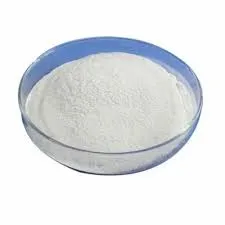
ທ.ວ. . 29, 2024 01:42 Back to list
Exploring the Solubility Characteristics of Hydroxyethyl Cellulose in Various Solvents
Understanding Hydroxyethyl Cellulose Solubility
Hydroxyethyl cellulose (HEC) is a water-soluble polymer derived from cellulose, a natural polymer found in the cell walls of plants. Due to its unique properties, including high viscosity, film-forming ability, and excellent solubility, HEC is widely used across various industries such as pharmaceuticals, cosmetics, food, and construction. This article delves into the solubility of hydroxyethyl cellulose, its significance, and factors affecting its solubility.
What is Hydroxyethyl Cellulose?
HEC is produced by etherifying cellulose with ethylene oxide. The degree of substitution of the hydroxyl groups of cellulose with hydroxyethyl groups determines its properties, including solubility. The water solubility of HEC makes it particularly useful in applications where thickening, stabilizing, or suspending agents are needed.
Importance of Solubility
The solubility of HEC is crucial because it directly influences its effectiveness in formulation and application. In pharmaceuticals, for instance, HEC is used as a viscosity agent in topical gels and creams, contributing to the product's texture and stability. In the food industry, its solubility affects how it can be used as a thickener or emulsifier in food products. Therefore, understanding HEC's solubility can guide manufacturers in creating products that meet specific performance and sensory requirements.
Factors Affecting Solubility
1. Molecular Weight The solubility of HEC is influenced by its molecular weight. Higher molecular weight HEC tends to have lower solubility as it has a greater tendency to form entangled structures, which can impede dissolving in water. Conversely, lower molecular weight HEC is more soluble as it can more readily disperse in aqueous solutions.
hydroxyethyl cellulose solubility

2. Degree of Substitution The degree of substitution (DS) refers to the average number of hydroxyethyl groups per anhydroglucose unit in cellulose. A higher DS typically results in increased solubility since more hydrophilic groups can interact with water. However, there is a balance; excessive substitution may lead to gelation rather than dissolution in specific formulations.
3. Temperature Temperature plays a significant role in the solubility of HEC. Generally, increasing the temperature enhances the solubility of HEC in water due to increased molecular motion, which helps to disrupt intermolecular interactions that could hinder dissolving.
4. pH of the Solution The pH level of the solution can also affect HEC solubility. HEC remains soluble over a wide pH range, but extreme pH conditions can lead to degradation of the polymer or changes in its solubility behavior. For example, very basic or acidic environments can affect the hydrogen bonding within the HEC structure and its interaction with water.
5. Ionic Strength The presence of salts or other ionic substances in the solution can influence the solubility of HEC. At low ionic strengths, HEC tends to be more soluble due to reduced electrostatic interactions. However, as ionic strength increases, solubility may decrease because ions can compete with HEC for water molecules, potentially leading to precipitation.
Practical Applications
In practical applications, the solubility of hydroxyethyl cellulose is customized to meet specific requirements. For instance, in the cosmetic industry, HEC is often modified to ensure stability and prevent separation in products like shampoos and lotions. In the construction industry, it is used to enhance the workability of cementitious materials, where optimal solubility is crucial for achieving desired viscosity and adhesion properties.
Conclusion
Hydroxyethyl cellulose is a versatile compound with significant applications across various industries predominantly due to its water-soluble nature. Understanding the factors affecting its solubility, including molecular weight, degree of substitution, temperature, pH, and ionic strength, is essential for optimizing its use in different formulations. As industries continue to innovate, the role of HEC will likely expand, making its solubility a critical area of research and development.
-
Versatile Hpmc Uses in Different Industries
NewsJun.19,2025
-
Redispersible Powder's Role in Enhancing Durability of Construction Products
NewsJun.19,2025
-
Hydroxyethyl Cellulose Applications Driving Green Industrial Processes
NewsJun.19,2025
-
Exploring Different Redispersible Polymer Powder
NewsJun.19,2025
-
Choosing the Right Mortar Bonding Agent
NewsJun.19,2025
-
Applications and Significance of China Hpmc in Modern Industries
NewsJun.19,2025







